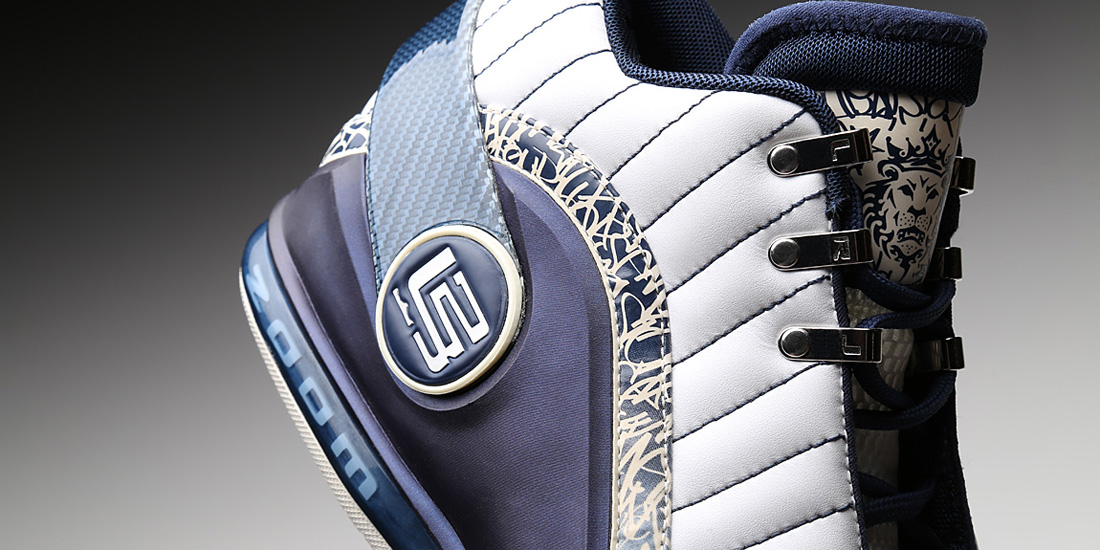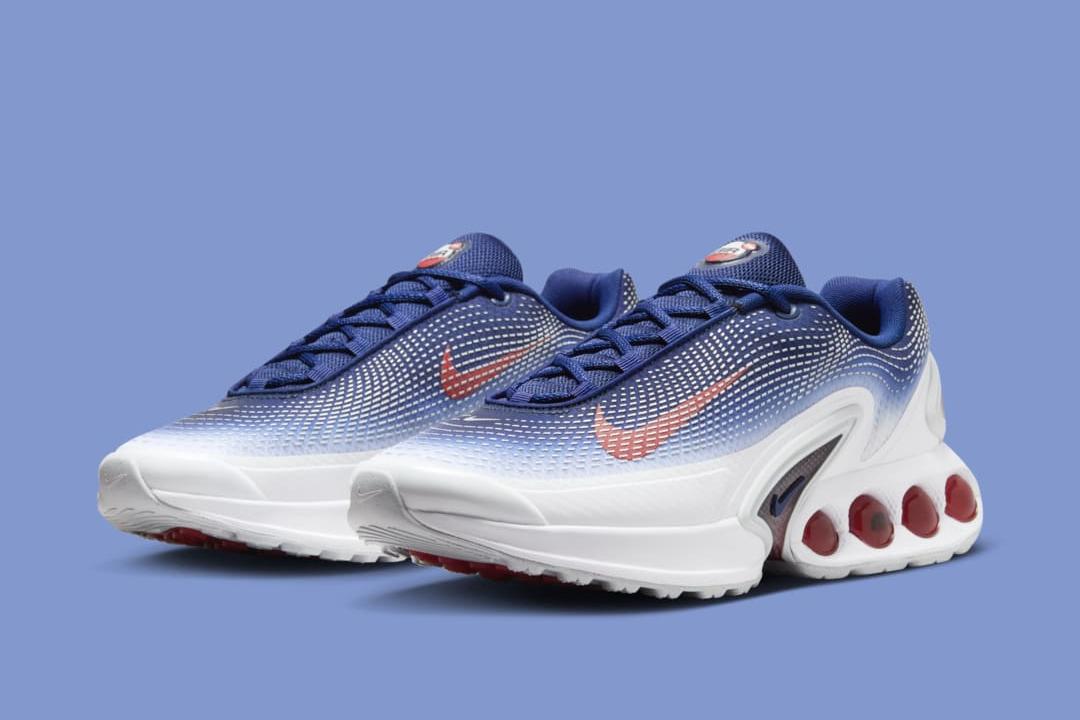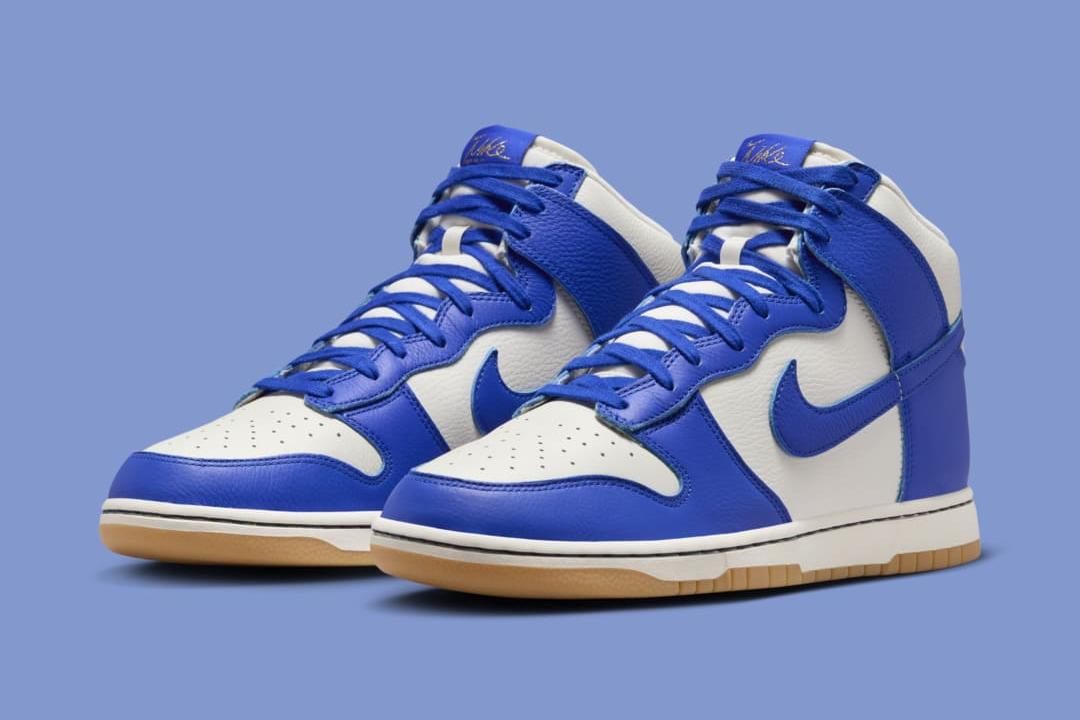This post may contain affiliate links. Please read our disclosure policy.
words & images // Nick DePaula:
Slight changes to statement level models have happened in a few cases throughout sneaker history, for both cosmetic and performance reasons. The sudden change to take off the toe overlay on the Air Jordan X, after it was initially included on two colorways, comes to mind. Or when Under Armour filled in the forefoot herringbone on the Anatomix Spawn under the radar just last year, for improved traction.
But to have an entire model re-designed and replaced in a matter of mere months — that’s only happened on less than a handful of occasions.
One of the most visible model replacements in the footwear industry came during the summer of 2008, just when LeBron James was set to take the grand stage of the Beijing Olympics. He was just a year removed from his first NBA Finals appearance, a stretch that to this day included some of the most heroic performances of his career, and his personal brand and profile was never larger. He was truly a global icon, just as he had brashly proclaimed one of his top goals to be.
For the first five years, the LeBron signature series featured explosive performance capable of harnessing the raw power and speed that such a truly generational player like “King James” possessed.
The league had never really seen anything quite like him to that point — he was a relentless beastly hybrid of Magic / Mailman / Barkley and more — and his footwear had to mirror the pace and force he played with.
Ken Link, Nike Basketball’s Design Director at the time, was tasked with leading the vision for Bron’s signature series for models 2-6. His very first crack, the Zoom LeBron II, remains one of my all-time favorite designs even a decade later. It’s perfect.
By the time the 6th shoe to carry the James name came around, as happens with all high profile signature series, the process had more voices, more opinions and more feedback along the way.
While the II and III used a combination of leather and TPU support pieces along the upper, the IV and V took the molding even further, introducing Foamposite to the series.
Kenzo would often talk about the notion of creating a “footbucket” to hold LeBron over the footbed of the shoe on cuts, and the molded foam panels first made famous by Penny Hardaway’s signature series offered up just the solution the team was looking for.
Plus, Foamposite usually always looks awesome, too. A bonus Nike is never mad at.
By the time the VI rolled around, though, both Nike and LeBron were looking to merge the worlds of on-court performance with off-court culture that’s so often inherent to hoops. The Air Force 25 had just released, and the brand wanted its basketball products worn in casual settings again, during an era where multi-colored Dunks and Retro Jordans ruled.
As the story goes, the call was made to fully re-design the shoe during the early spring of 2008, even after the then-VI, which was codenamed the “Zoom Power,” had been sold into retailers around the nation. The Zoom Power even infamously and mistakenly appeared in the pages of Eastbay, in a Black / White / Red colorway I’d most definitely still love to own.
While re-designing a signature shoe in full the spring before a fall launch sounds daunting enough, keep in mind that this was an Olympic year, and LeBron needed his VI in time for the Gold Medal Game. Again, no small task.
The VI that was released featured what was then described to be a jean-friendly look, with rich leathers, clean overlays, and a leather wrapped midsole. It was decidedly lifestyle by approach, but still featured full-length Zoom Air and ample padding.
The eventual design, seen to the right, didn’t feel rushed to those not privy to the backstory, which at that point included only the most in-the-know sneaker enthusiasts who were constantly camped out on NikeTalk. This was all just before Twitter, and long before Instagram, of course.
It’s hard to say for certain if Nike made the right call — the casual revolution they were hoping for that soon came can be more attributed to the Hyperdunk’s off-court crossover — but regardless, the LeBron VI was still a success by most people’s definition.
Personally, I’ve always held onto the hope that the original design might someday release. I just loved the silhouette, the way in which the Foamposite footbucket flowed around the upper, and the alternating lateral / medial logos that were linked by a faux-carbon fiber heel counter. It was my type of design, but of course, I’ve never cared for “jean friendly” briefed designs, and am always pushing towards modern looks. Who knows, maybe one day there will even be a major marketing campaign surrounding its from-the-vault revival like the recent Air Max Zero phenomenon, or at least I can hope.
As we look back, Ken Link’s hurried design set the table for the more visually technical models that followed in the 7 and 8, and the space we’re currently in, where the LeBron signature series has reached mass appeal off-court, married with his global icon profile.
Let us know which version you prefer, and take a look at the original Zoom LeBron VI, aka the Zoom Power, in all its glory in these exclusive, never-before-published images.




